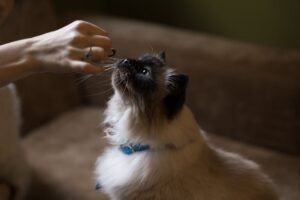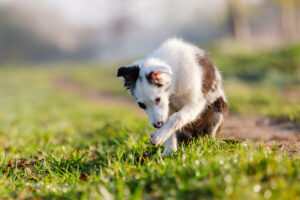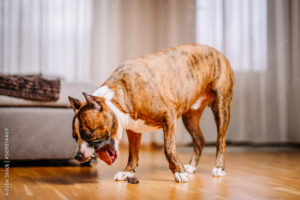Did you know that 96 million cats collectively produce a staggering 28.8 million pounds of waste each day? That adds up to a whopping 10.2 billion pounds each year! But what do you do when it seems like your cat is on a quest to outdo those numbers by pooping right after their meal? While this behavior can raise eyebrows, it’s not always a cause for concern.
Let’s explore what this might mean and what you should know about your cat’s digestive habits.
Is It Normal for Cats to Poop Immediately After Eating?
Yes, it can be normal for some cats to poop right after eating. This happens because eating triggers something called the “gastrocolic reflex,” which stimulates the bowels to move.
When your cat eats, their stomach stretches, sending signals to the intestines to start working, and this can lead to a bowel movement soon after.
It’s a natural process, but it’s important to make sure the poop looks healthy—firm, well-formed, and not too smelly. Overall, as long as your cat seems happy and healthy, there’s usually no need to worry about quick trips to the litter box after a meal.
How Often Should Your Cat Be Pooping?
Most cats will typically poop once a day, although some may go every 12 to 36 hours. Kittens, due to their faster metabolism and frequent feeding, might poop as many as three times a day, while older cats often have less frequent bowel movements.
If your cat is pooping more than three times a day, or less than once a day, it could indicate a health issue, and it’s wise to check with your vet to ensure everything is okay.
In general, food takes about 10 to 24 hours to pass through your cat’s digestive system, so a regular daily poop is a good sign of healthy digestion.
What Can Your Cat’s Poop Color Tell You?
The color of your cat’s poop can change based on what they eat, but certain colors may signal some health issues. Here’s a guide to help you decode what different poop colors could indicate:
Red
Bright red poop indicates the presence of fresh blood, often resulting from the lower gastrointestinal tract or an injury near the anus.
If you notice streaks of blood or slimy mucus, observe your cat’s condition closely.
A one-time occurrence might not be alarming, but if the stool is entirely red or accompanied by diarrhea, speak with your vet.
Black
Black poop can be a sign of bleeding in the upper gut, particularly if it has a coffee grounds appearance, which indicates digested blood.
However, if your cat consumes a diet high in blood (like raw prey), darker stool may be normal.
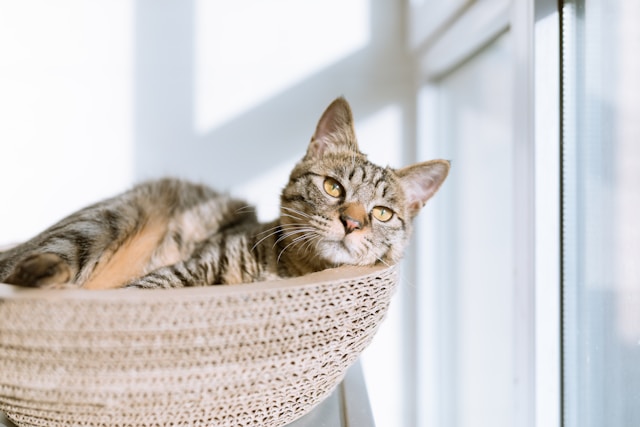
Yellow or Orange
Yellow or orange poop can occasionally occur but should raise a red flag if it becomes consistent.
This color change may indicate liver problems, so if your cat’s poop remains yellow or orange, seek your vet’s attention.
Green
Green poop might result from a diet rich in vegetables or plants, but it can also point to gallbladder issues.
If you notice a persistent green color, it’s best to consult your vet.
White
Lighter-colored poop, especially from a diet high in white meats like chicken or turkey, can be normal.
However, if the poop is very light and this change is sudden, it may indicate pancreatic issues. Additionally, white spots or strings could suggest the presence of parasitic worms.
Why Does Your Cat Poop So Often?
As with humans, the amount cats poop can vary, depending on lifestyle and what they eat. Here are some factors that can affect how often your cat poops, which will help you determine what’s normal for your kitty.
Age of the Cat
Older cats may poop less often than younger ones or kittens. This is because senior cats face age-related issues—like slowed metabolism, arthritis, or other health conditions—that may make getting to the litter box harder or affect their digestive system.
Some older cats may even develop chronic constipation due to changes in muscle tone or dehydration. Regular check-ups and keeping an eye on their habits will help ensure they stay regular.
Activity Level
Active cats typically have more regular bowel movements. Exercise stimulates the digestive system, keeping it working efficiently.
If your cat is more of a champion napper or a couch potato, they might poop less often, which could lead to discomfort or constipation.
Playing more with toys or interactive games can help your cat digest food better and poop more often.
Water Intake
Hydration plays a key role in digestion. If your cat isn’t drinking enough, their stool can become hard and dry, leading to constipation.
Cats that primarily eat dry kibble are at greater risk, as they get little moisture from their food. Make sure your cat has access to fresh water at all times, and consider introducing wet food to increase their water intake.
Quality of Food
What your cat eats directly affects how often they poop. Low-quality food often contains fillers and indigestible materials that pass through the digestive system, resulting in larger and more frequent stools.
On the other hand, high-quality, nutrient-dense foods are more easily absorbed by your cat’s body, leaving less waste.
Additionally, overeating can cause your cat to poop more often. Try regulating their portions to ensure they’re eating the right amount for their size and activity level.
Changing Food
A change in diet can affect your cat’s digestive system, leading to changes in their pooping habits.
To minimize this, gradually introduce new food by mixing it with their current food over the course of a week or more. This allows their digestive system to adjust smoothly and helps prevent stomach upset or diarrhea.
Food Allergies
Cats can develop food allergies. Common symptoms include:
- diarrhea
- vomiting
- excessive pooping
If you notice these signs, your cat may be allergic to an ingredient in their food. Consult your vet to identify the allergen and switch to a more suitable diet.
Keeping track of your cat’s pooping habits is a great way to monitor their health and detecting food allergies early.
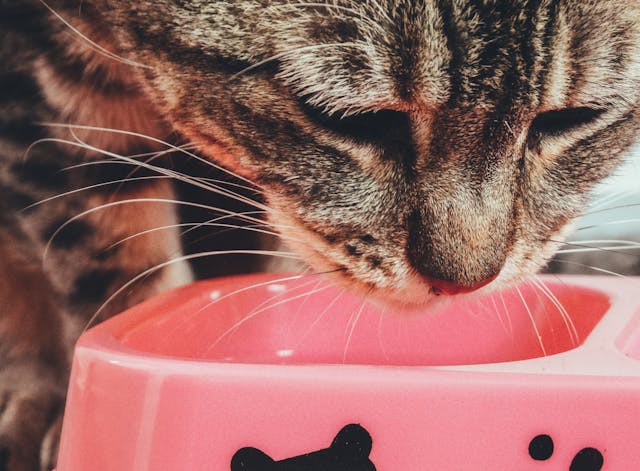
How to Tell If Your Cat’s Post-Meal Pooping Is Normal or a Problem
To tell if your cat’s post-meal pooping is normal or a problem, pay attention to a few key things:
Consistency of Stool
Healthy cat poop should be firm and well-formed, with a slightly moist surface.
If the stool is runny, watery, or too hard, this might signal digestive problems like diarrhea or constipation.
Frequency of Bowel Movements
Cats usually poop once or twice a day. If your cat is pooping right after every meal and much more frequently than normal, it could be a sign of an underlying issue like gastrointestinal irritation.
Changes in Behavior
If your cat seems uncomfortable, is straining to poop, or shows signs of distress when visiting the litter box, this could be a red flag.
Unusual behavior like meowing or pacing before pooping could indicate pain or discomfort.
Appearance of Stool
Keep an eye out for abnormalities like blood, mucus, or undigested food in the stool.
These could indicate problems like parasites, infections, or food intolerances that may require a vet’s attention.
Smell
While cat poop always has an odor, an unusually strong or foul smell could suggest digestive trouble, poor diet, or an infection.
Your Cat’s Overall Health
Evaluate your cat’s overall health. Is your cat eating normally, staying active, and maintaining a healthy weight? A sudden change in pooping habits, along with changes in appetite or energy levels, may signal a problem that needs vet attention.
Duration of the Behavior
If this pooping pattern has been ongoing and your cat seems healthy otherwise, it might just be how your cat’s body works.
However, if the change is sudden, it’s always a good idea to get a vet’s opinion.
Why Should You Choose Truffle Paws for Your Cat’s Well-Being?
At Truffle Paws , we know that your cat’s health is your top priority, especially when it comes to their digestive habits and overall well-being. From sudden changes in bowel movements to concerns about their poop color, keeping your cat healthy can sometimes feel overwhelming.
With Truffle Paws Pet Insurance, you can rest easy knowing that vet expenses related to digestive issues, food allergies, or gastrointestinal concerns are covered.
Whether your cat needs treatment for a dietary problem or an unexpected illness, we’ve got you covered.
Let us help you focus on what matters most—your cat’s health and happiness.
To learn more about our comprehensive pet insurance plans and how we can support your pet’s well-being, contact us today.

